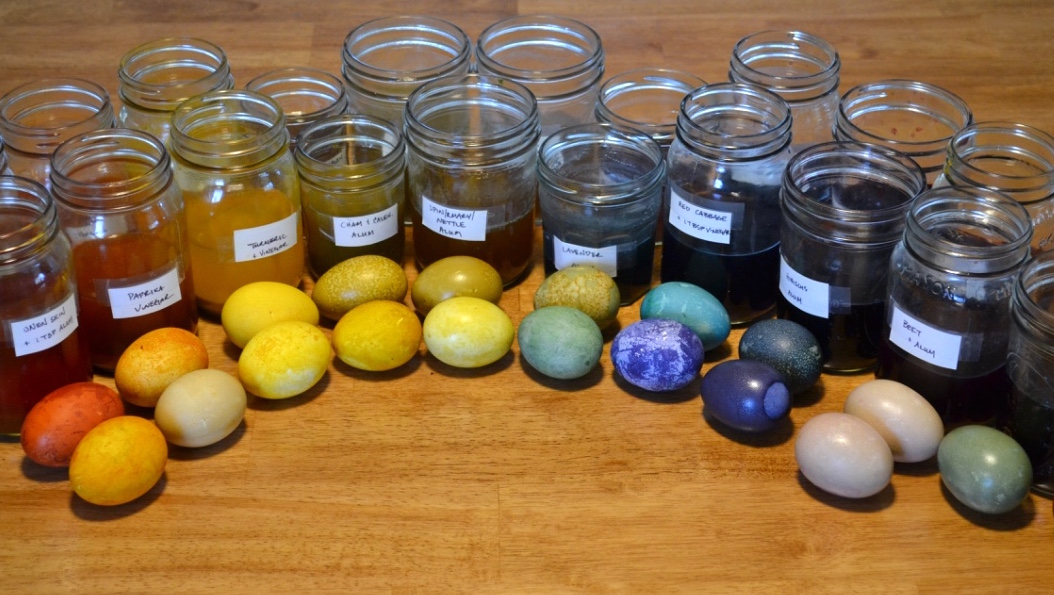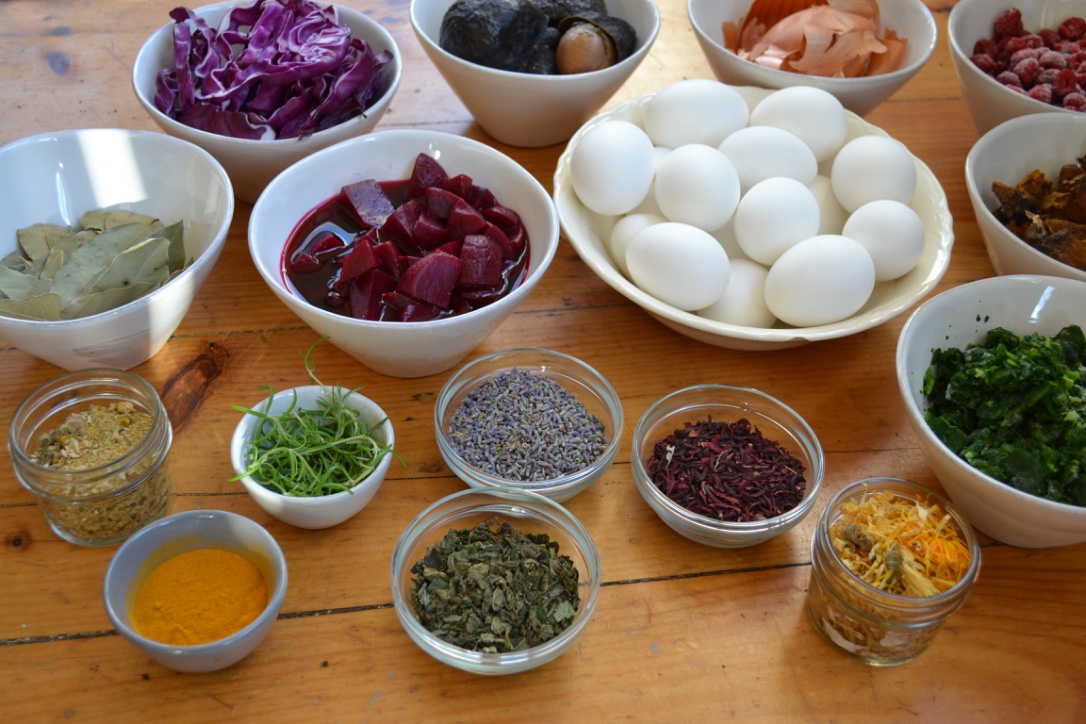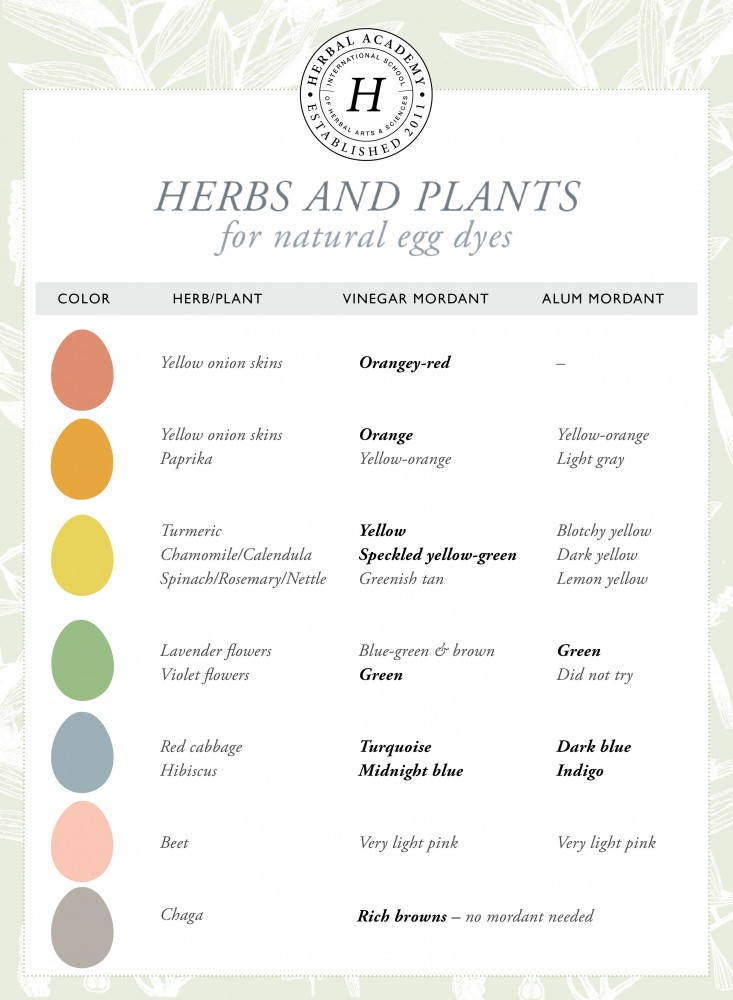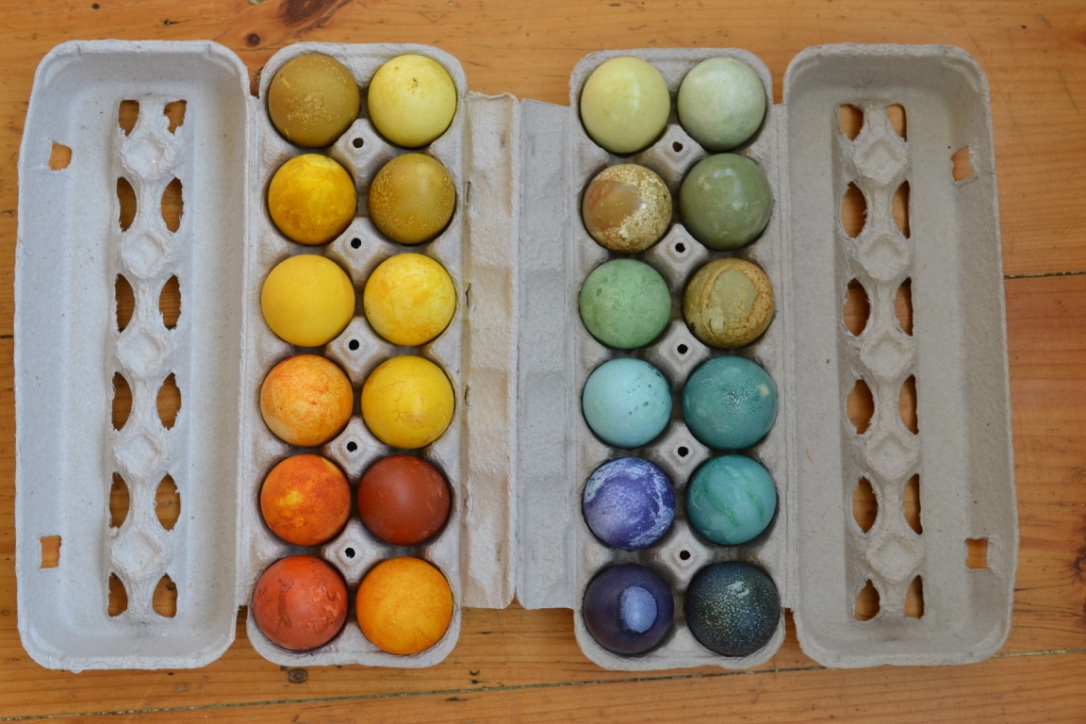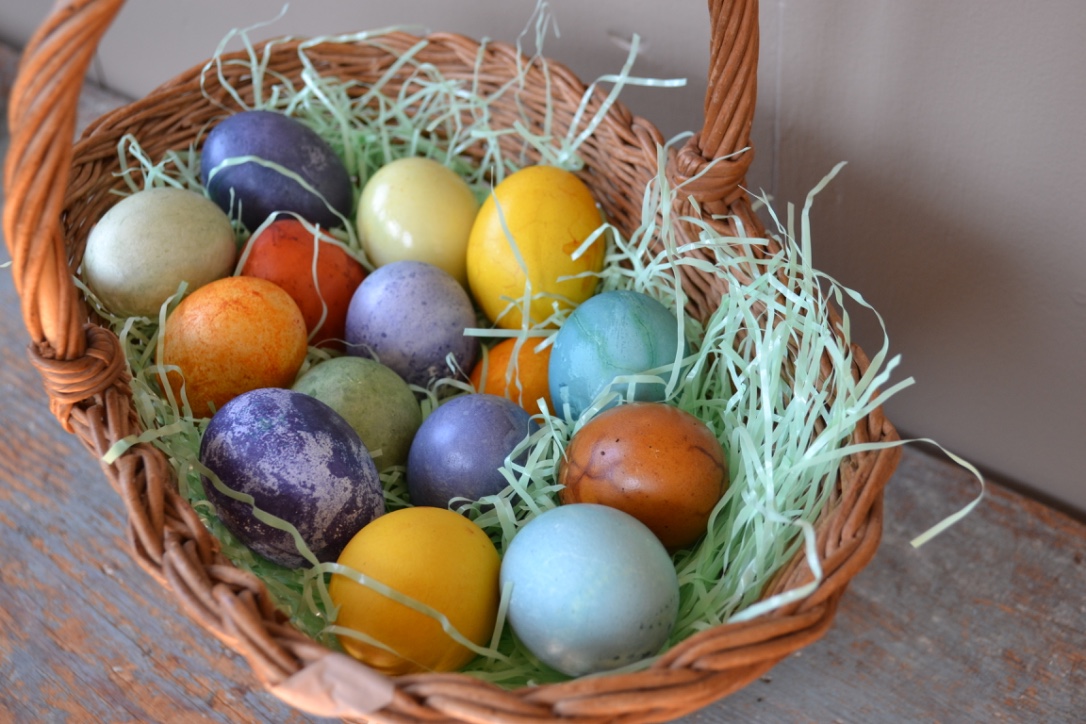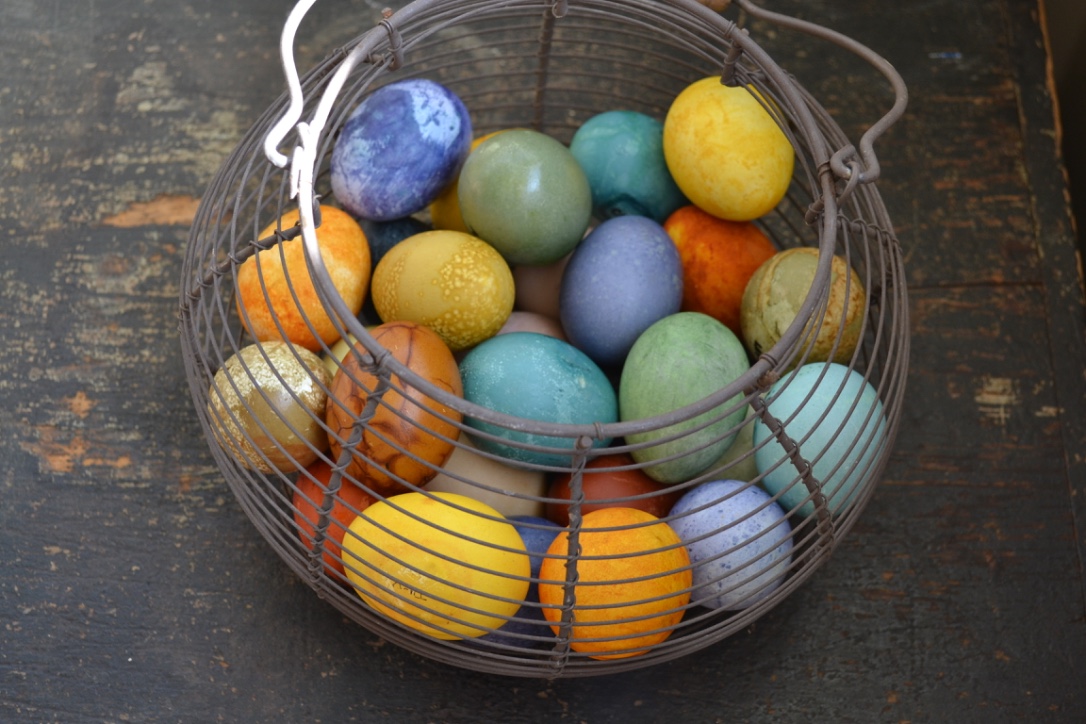
How to Dye Easter Eggs Naturally
Dyeing eggs for Easter became infinitely more fun and satisfying for me once we ditched the chemical dyes in favor of natural dyes made from herbs, plants, and food. Choosing natural dyes over petroleum-based chemical dye kits might require a bit more planning, preparation, and patience, and natural dyes may be more variable, but the resulting character and beauty make it worth the extra effort to dye Easter eggs naturally.
Some common kitchen staples are well known as egg dyeing material: onion skins, turmeric, and red cabbage, for example. These are definitely go-to materials that yield fantastic results.
As an herbalist intrigued by my cup of bright red hibiscus tea as well as the plant-based dyes used historically to dye fabric, I like to experiment with the contents of my herbal cupboard and the plants in my yard. Some of the medicinal herbs and spices we discuss in our online courses also make great dyes! This year I turned my kitchen into a laboratory to test more herbs as dye material and play around with mordants and modifiers.
Mordants
Alum (potassium aluminum sulfate) is a mordant that helps the color penetrate the eggshell. White vinegar (acetic acid) is a modifier, changing the pH of the dye solution and thus affecting the dye color. (Griffin Dyeworks, 2012)
Eggshells are made of calcium carbonate and have a thin outermost layer called the “bloom” which seals the pores in the shell to prevent bacteria from entering the egg and to reduce moisture loss. To improve the dye’s ability to adhere to the surface of the eggshell, remove this coating with soapy water or vinegar. Adding acid to the dye bath itself will also help. The calcium carbonate shell reacts with the acidic dye (as evidenced by carbon dioxide bubbles forming on the shell), allowing the color to penetrate the shell during the hydrogen bonding process.
Herbal Egg Dyes
Enough science, let’s get back to the art of naturally dyed Easter eggs!
The chart below lists the spectrum of dye colors yielded by the plant materials with which I experimented. The bold colors indicate the plant/mordant combination I would highly recommend.
In order to get a clear sense of these dye colors, I purchased white eggs from the grocery store. However, using the beige, pink, brown, and blue eggs from my own chickens could add nice depth or variation to these colors.
Hibiscus, red cabbage, lavender flowers, and violet flowers produced gorgeous and unexpected colors, and quite frankly knocked my socks off!
Here’s what worked:
- Hibiscus and red cabbage produced stunning blues using both types of mordants – from robin’s egg blue and turquoise, to midnight and denim blues.
- Lavender flowers with alum and violet flowers with vinegar produced the grassy green color that is often so elusive with natural dyes.
- The old standbys of yellow onion skin and turmeric produced nice rich oranges and yellows while a combination of chamomile and Calendula blossoms with vinegar produced the most intriguing greenish-yellow speckled beauty.
- And my cup of plain old Chaga tea produced a rich and lovely brown (although coffee would be a more easily sourced, sustainable choice – but for the record I drank my Chaga tea after I dyed the egg!).
Here’s what didn’t work:
- Cooked beets were underwhelming, although did impart a very light pink hue with light green mottling. Up close it is rather fascinating, but I might try berries or fresh beet juice next time.
- I had read that avocado skins and pits made a pink dye, but avocado was a bust for me. Don’t bother!
- Orange peel produced a very light yellow but honestly, I’d stick with turmeric or the chamomile/Calendula combo for yellows.
How to Dye Easter Eggs Naturally
My approach was thus: hard boil all eggs in advance, adding a few tablespoons of vinegar to the boiling water bath to prepare the shell for coloring.
To hard boil eggs without cracking them, add cold water and eggs to a pot, making sure the water covers the eggs completely. Bring to a boil (I boil medium eggs about 12 minutes and large eggs about 15 minutes) and then transfer to a cold water bath immediately to stop the cooking process. Note that new, fresh eggs are harder to peel than older eggs, so it’s okay to dig out the eggs at the back of the fridge for this if you’re planning to eat them!
Next, I created the dyes. Since I wanted to compare alum and vinegar as mordants, I prepared two dye baths for each herb/plant, but you can choose to make just one dye bath per herb/plant based on the chart above, where I identify which mordant works best for each plant.
Natural Egg Dye Recipe
1 ½ cups water
Plant material of choice (2 tablespoons spices/powders, 4 tablespoons dried leaves/flowers, or 1 cup chopped fruit/vegetable)
1 teaspoon alum or 1 tablespoon vinegar
- Bring water and plant material to a boil and then simmer for 10-15 minutes.
- Turn off heat.
- Strain dye into a jar or bowl and add vinegar or alum (compost the plant material).
- Add a hard boiled egg to the dye bath and let sit for minutes to hours, depending on dye and desired color.
In general, I let the eggs stay in the dye baths for 1-2 hours (hibiscus with alum yielded vibrant results almost instantly). I was pleasantly surprised that these dyes worked so well as cold dye baths, as opposed to having to boil the eggs in the dye baths.
This means that you can set jars or bowls of these dyes onto the table and kiddos can plunk some eggs in and start seeing results in fairly short order. They can also check the eggs every fifteen minutes or so to let the color deepen until it is to their liking.
Helpful tips: Once the egg is dyed, place it on a baker’s cooling rack to dry (or use egg cartons as racks). Once the egg is completely dry, rub a dab of cooking oil on the shell to add a nice sheen.
And a final note of caution: Turmeric stains everything – skin, clothing, countertops, etc. Handle that dye with care! It does eventually wash out of the skin and hard surfaces.
As you can imagine, this is just the tip of the iceberg in terms of plants and herbs with which you could experiment.
For additional ideas, read our other posts on Easter egg decorating: Four Easter Egg Decorating Techniques and Natural Easter Egg Dye!
We would love to hear about any additional plants and herbs you use to prepare natural egg dyes below in the comments!
Would you like to learn more about herbs? Here at the Academy, we have many wonderful opportunities for you to begin or expand your herbal learning! Please visit our course page here for more information.
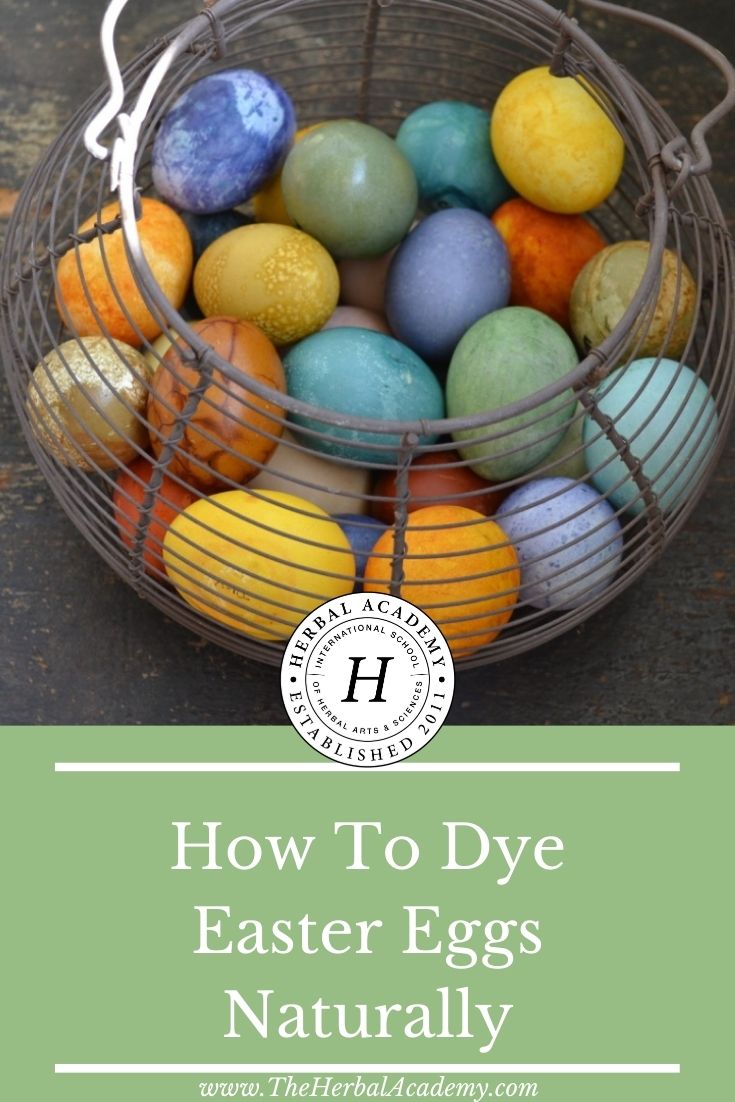
References
Griffin Dyeworks and Fiber Arts. (2012). Understanding mordants and modifiers. http://griffindyeworks.com/understanding-mordants/

